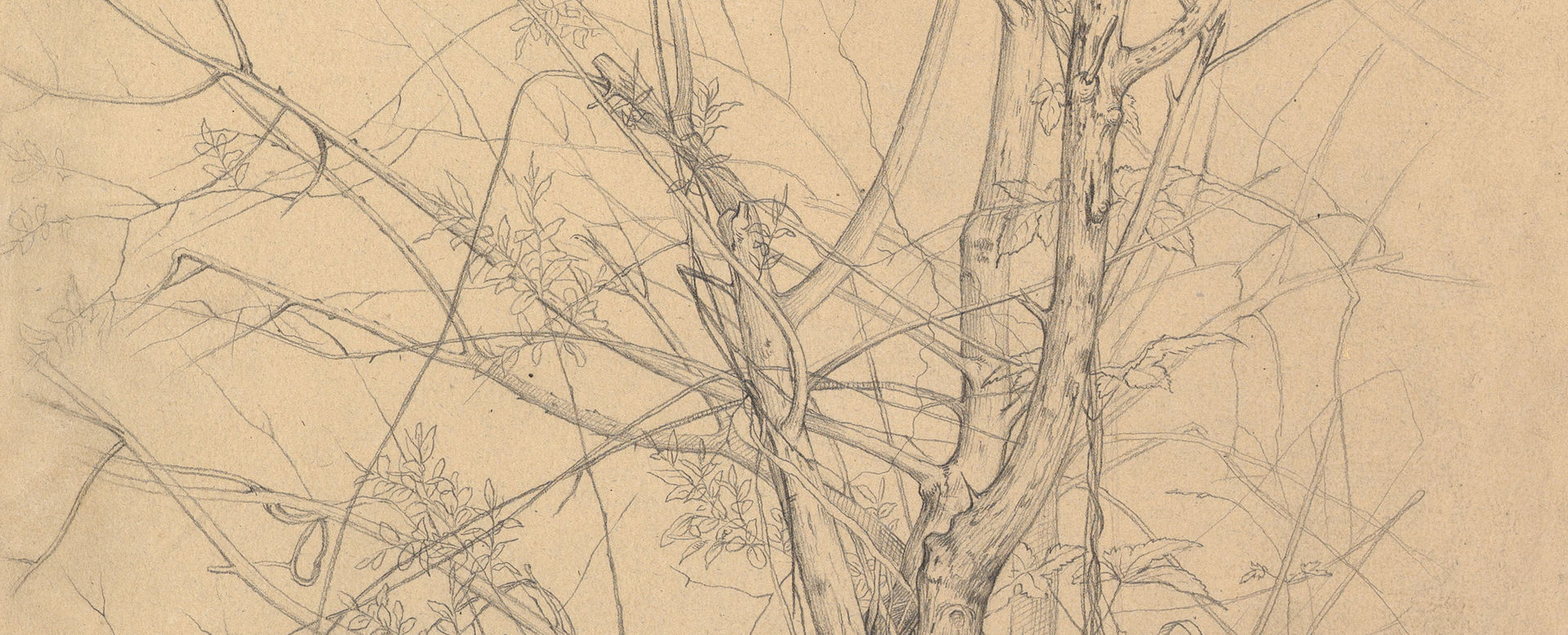Drawing of a design for a Necklace, after jewel designed in the Second Empire (ca. 1850-70), probably by Alexis Falize
Anonymous, French, 19th century French
After (?) Alexis Falize French
Not on view
Drawing after a design for a necklace created during the Second Empire (ca. 1850-70), possibly by French jeweler Alexis Falize (?), part of an album of drawings by various artists for individual pieces of jewelry, containing a variety of designs in the Art Nouveau style of the late nineteenth and early twentieth century, as well as some pieces in historic period styles. The design consists of a gold cable necklace with alternating gold rings with triangular gold frames containing small brilliants or diamonds and small rosettes made up of small brilliants or diamonds. Below the triangular frames hang small gold roundels with seamless patterns of lozenges and a small, round ruby or coral in the center, and framed by small triangles. From the sides of the lower edge of the triangular frames hang pairs of thinner gold cable strips, joining one frame to the next, and holding rosettes of small diamonds or brilliants in the center, from which hang inverted cones of gold with thin, horizontal, zig-zagging motifs engraved on their upper part. These designs reveal are of the style of the Second Empire in France, which were inspired on Greek and Roman antiquity and Mediterranean cultures, and featured compositions with semi-precious stones, such as turquoise and coral, together with enamel and gold. It is likely that, instead of diamonds or brilliants, the manufactured jewel was created with glass stones or with enamel.



